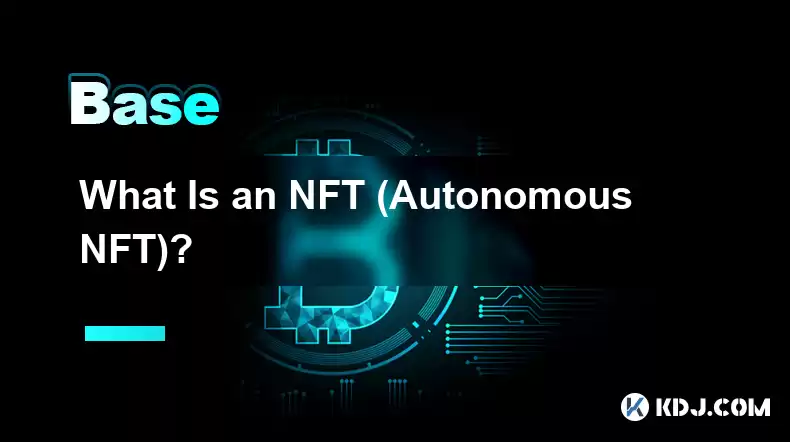-
 Bitcoin
Bitcoin $115000
0.12% -
 Ethereum
Ethereum $3701
4.50% -
 XRP
XRP $3.081
2.99% -
 Tether USDt
Tether USDt $0.0000
-0.01% -
 BNB
BNB $767.9
1.45% -
 Solana
Solana $169.5
3.13% -
 USDC
USDC $0.9999
0.01% -
 Dogecoin
Dogecoin $0.2106
4.30% -
 TRON
TRON $0.3334
1.62% -
 Cardano
Cardano $0.7564
2.54% -
 Stellar
Stellar $0.4165
0.76% -
 Hyperliquid
Hyperliquid $38.75
0.25% -
 Sui
Sui $3.593
3.00% -
 Chainlink
Chainlink $17.08
3.59% -
 Bitcoin Cash
Bitcoin Cash $573.6
4.35% -
 Hedera
Hedera $0.2508
-0.84% -
 Avalanche
Avalanche $23.07
6.46% -
 Ethena USDe
Ethena USDe $1.001
-0.02% -
 Litecoin
Litecoin $120.8
8.17% -
 UNUS SED LEO
UNUS SED LEO $8.943
-0.32% -
 Toncoin
Toncoin $3.400
-5.60% -
 Shiba Inu
Shiba Inu $0.00001255
1.54% -
 Uniswap
Uniswap $9.908
6.32% -
 Polkadot
Polkadot $3.718
2.10% -
 Monero
Monero $303.0
-0.74% -
 Dai
Dai $0.9999
-0.02% -
 Bitget Token
Bitget Token $4.392
0.91% -
 Cronos
Cronos $0.1403
6.31% -
 Pepe
Pepe $0.00001076
1.13% -
 Aave
Aave $267.2
1.80%
What Is an NFT (Autonomous NFT)?
Autonomous NFTs (ANFTs) stand out from traditional NFTs by enabling automated actions based on smart contracts, dynamic behavior, programmable governance, and seamless interoperability.
Dec 16, 2024 at 06:19 pm

Key Points:
- Definition and characteristics of Autonomous NFTs
- Protocols and use cases for Autonomous NFTs
- How Autonomous NFTs differ from traditional NFTs
- Market trends and future of Autonomous NFTs
- FAQs on Autonomous NFTs
What Is an Autonomous NFT (Autonomous NFT)?
Definition and Characteristics of Autonomous NFTs
Autonomous NFTs (ANFTs) are a new class of NFTs that leverage smart contracts to enable automated actions based on predetermined conditions. Unlike traditional NFTs, which represent static ownership of digital assets, ANFTs possess dynamic capabilities, allowing them to adapt and respond to changing circumstances without manual intervention.
Key characteristics of ANFTs include:
- Automation: ANFTs follow predefined algorithms to execute actions automatically, such as buying, selling, or interacting with other assets.
- Dynamic behavior: They can adapt to market conditions, trigger actions based on price thresholds, or interact with other smart contracts.
- Decentralized ownership: ANFTs represent ownership of digital assets that are decentralized and stored on a blockchain.
- Programmable: Users can define the rules and actions for ANFTs, enabling customization and flexibility.
Protocols and Use Cases for Autonomous NFTs
ANFTs find applications in various scenarios:
- Automated Trading: ANFTs can monitor market conditions and execute trades based on predefined strategies, allowing for autonomous trading.
- Digital Art Curation: ANFTs can represent ownership of digital art and programmatically curate collections, ensuring authenticity and provenance.
- Gaming Interactivity: In gaming, ANFTs can automate in-game actions, facilitate item trading, and enable dynamic NFT gameplay.
- Fundraising and Donations: ANFTs can be used to simplify fundraising and donations, enabling automated distributions based on specific conditions.
- Decentralized Finance (DeFi): ANFTs can interact with DeFi protocols, enabling automated lending, borrowing, and staking.
How Autonomous NFTs Differ from Traditional NFTs
ANFTs differ from traditional NFTs in several ways:
- Automation: ANFTs enable automated actions based on smart contracts, while traditional NFTs are static assets without dynamic capabilities.
- Dynamic Behavior: ANFTs can respond to external stimuli and adapt to market conditions, while traditional NFTs possess fixed attributes.
- Governance: ANFTs allow for programmable governance, giving creators and owners more control over their assets.
- Interoperability: ANFTs can interact with smart contracts and other NFTs, fostering a more connected and dynamic NFT ecosystem.
Market Trends and Future of Autonomous NFTs
The ANFT market is nascent but rapidly growing. Protocols such as ARC, NFTfi, and Aavegotchi are leading the charge in developing and popularizing ANFTs. As the technology matures and adoption increases, ANFTs are expected to play a significant role in reshaping the NFT industry.
FAQs on Autonomous NFTs
What are the benefits of using ANFTs?
- Automation and efficiency: ANFTs automate repetitive tasks and optimize operations.
- Dynamic responses: They adapt to changing conditions, improving market competitiveness.
- Programmable governance: Creator and owner control over NFT attributes and behaviors.
What industries will benefit the most from ANFTs?
- Finance: Automated trading, lending, and portfolio management.
- Gaming: Dynamic gameplay, item trading, and player-driven ecosystems.
- Art: Provenance verification, curated collections, and automated art curation.
What are the challenges facing ANFT adoption?
- Technical complexity: ANFTs require a strong understanding of smart contracts and blockchain development.
- Interoperability: Standardization and compatibility across platforms are essential for full adoption.
- Regulatory uncertainty: Clarification of regulatory frameworks is needed to support ANFT use in different jurisdictions.
Disclaimer:info@kdj.com
The information provided is not trading advice. kdj.com does not assume any responsibility for any investments made based on the information provided in this article. Cryptocurrencies are highly volatile and it is highly recommended that you invest with caution after thorough research!
If you believe that the content used on this website infringes your copyright, please contact us immediately (info@kdj.com) and we will delete it promptly.
- Crypto Airdrops: Your August 2025 Guide to Free Tokens & Opportunities
- 2025-08-05 13:45:13
- Luxury Dining Reimagined: St. Regis Singapore & Marriott's Culinary Celebration
- 2025-08-05 13:45:13
- Fancy Farm Picnic: A Sneak Peek at the 2026 US House Race
- 2025-08-05 13:50:12
- Cardano Price, ADA Forecast & Ethereum Price: What's the Buzz?
- 2025-08-05 13:50:12
- Velo Universe, DEX, and DeFi Security: Navigating the Future of Decentralized Trading
- 2025-08-05 09:25:13
- Bitget Wallet Revolutionizes Solana with Gas-Free Transactions: A New Era for DeFi
- 2025-08-05 09:25:13
Related knowledge

What is the difference between CeFi and DeFi?
Jul 22,2025 at 12:28am
Understanding CeFi and DeFiIn the world of cryptocurrency, CeFi (Centralized Finance) and DeFi (Decentralized Finance) represent two distinct financia...

How to qualify for potential crypto airdrops?
Jul 23,2025 at 06:49am
Understanding What Crypto Airdrops AreCrypto airdrops refer to the distribution of free tokens or coins to a large number of wallet addresses, often u...

What is a crypto "airdrop farmer"?
Jul 24,2025 at 10:22pm
Understanding the Role of a Crypto 'Airdrop Farmer'A crypto 'airdrop farmer' refers to an individual who actively participates in cryptocurrency airdr...

What is the difference between a sidechain and a Layer 2?
Jul 20,2025 at 11:35pm
Understanding the Concept of SidechainsA sidechain is a separate blockchain that runs parallel to the main blockchain, typically the mainnet of a cryp...

What is the Inter-Blockchain Communication Protocol (IBC)?
Jul 19,2025 at 10:43am
Understanding the Inter-Blockchain Communication Protocol (IBC)The Inter-Blockchain Communication Protocol (IBC) is a cross-chain communication protoc...

How does sharding improve scalability?
Jul 20,2025 at 01:21am
Understanding Sharding in BlockchainSharding is a database partitioning technique that is increasingly being adopted in blockchain technology to enhan...

What is the difference between CeFi and DeFi?
Jul 22,2025 at 12:28am
Understanding CeFi and DeFiIn the world of cryptocurrency, CeFi (Centralized Finance) and DeFi (Decentralized Finance) represent two distinct financia...

How to qualify for potential crypto airdrops?
Jul 23,2025 at 06:49am
Understanding What Crypto Airdrops AreCrypto airdrops refer to the distribution of free tokens or coins to a large number of wallet addresses, often u...

What is a crypto "airdrop farmer"?
Jul 24,2025 at 10:22pm
Understanding the Role of a Crypto 'Airdrop Farmer'A crypto 'airdrop farmer' refers to an individual who actively participates in cryptocurrency airdr...

What is the difference between a sidechain and a Layer 2?
Jul 20,2025 at 11:35pm
Understanding the Concept of SidechainsA sidechain is a separate blockchain that runs parallel to the main blockchain, typically the mainnet of a cryp...

What is the Inter-Blockchain Communication Protocol (IBC)?
Jul 19,2025 at 10:43am
Understanding the Inter-Blockchain Communication Protocol (IBC)The Inter-Blockchain Communication Protocol (IBC) is a cross-chain communication protoc...

How does sharding improve scalability?
Jul 20,2025 at 01:21am
Understanding Sharding in BlockchainSharding is a database partitioning technique that is increasingly being adopted in blockchain technology to enhan...
See all articles

























































































